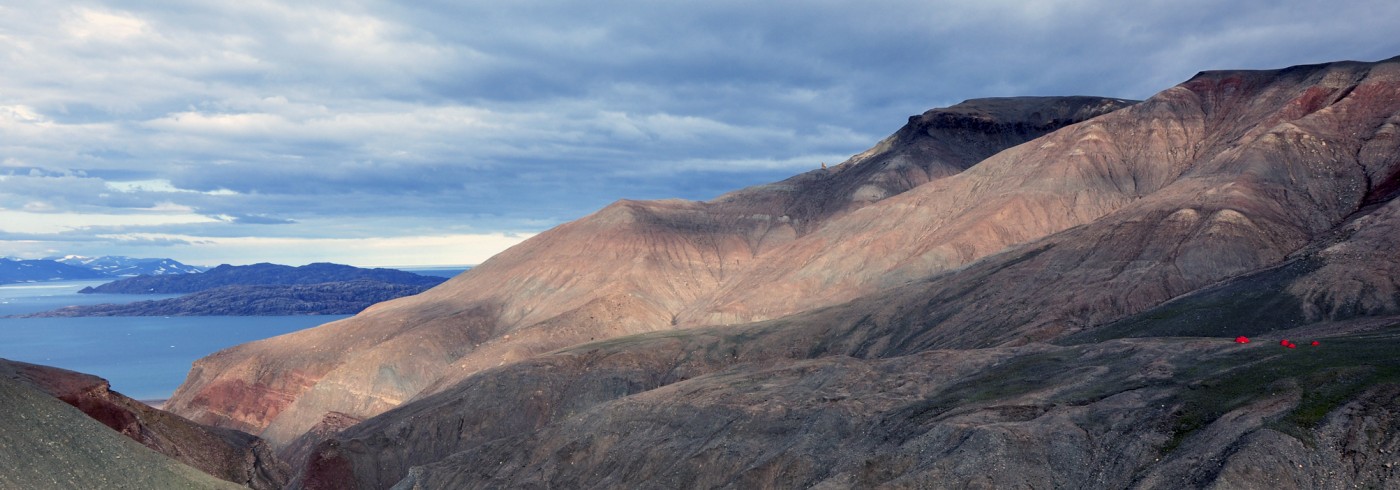Time is running out. We have to split our team in two so that we can achieve both of our Celsius objectives before we leave in three days. Grzegorz and Lasse have therefore gone down slope to make the silicon mould of the tetrapod track way while Ben and Henning made the ascent to the 1,200 m summit of Celsius Bjerg, across the snow cap and down the other side to the black shale quarry on the snow line.
The track way slab turned out to be huge (about the size of a car) and could not be moved or cut out without damage. The only option was to take a high definition silicon mould, which could be used to reproduce positive casts in the laboratory, as well as a 3D digital rendering from a laser scan of the footprint surface.
The silicon is a viscous liquid that has to be painted on. It is also cold today meaning that it will take time to cure. Multiple layers needed to be applied, and each must to be brushed on to spread it evenly and remove air bubbles. It will be a long and laborious job but the results will be worth it.
As it turns out that hanging around killing time while waiting for the silicon was useful. Grzegorz and Lasse found some scales and bone of the huge sarcopterygian predator Holoptychius on the slope, as well as an isolated tetrapod jaw – perhaps Ichthyostega itself! This will need preparation back in Uppsala but part of the tooth row was already visible.
Henning and Ben set out early to climb the mountain. The cold had frozen Lasse’s tracks overnight so they could follow his trail up to the summit.
What a view! The surface of Sofia Sund, which snakes between Ymer and Geographical Society islands, was like a sheet of glass. It reflected both the clouds and the mountains but was speckled here and there by floating ice.
The sky also looked a bit ominous – grey clouds coming in from the north and east. This made for great photographic lighting though.
After crunching and sliding down the snowy slope on the far side of the summit Henning and Ben made it to the quarry in a little over an hour.
The plan was to work until the light fails or the cold gets too extreme.
The entire exposed black shale block was mined out and processed over the course of about 6 hours. We got more Cuneognathus, but most important of all was the strike of a chisel to split two saucer-sized sheets of rock that revealed an almost complete acanthodian. This is the first time such a well preserved specimen of this early cartilaginous fish has been found in the Obrutschew Bjerg Formation, and it represents a species new to science!
Henning excitedly danced around for a while with his prize before tenderly packing it for the trip home.
By now Ben and Henning were getting really cold. The wind had also picking up so they decided to call it a day.
The dark clouds had gone but the grey sky looked a bit like there was a chance of snow. Nothing changed on the way back but they had no idea of what was in store…

